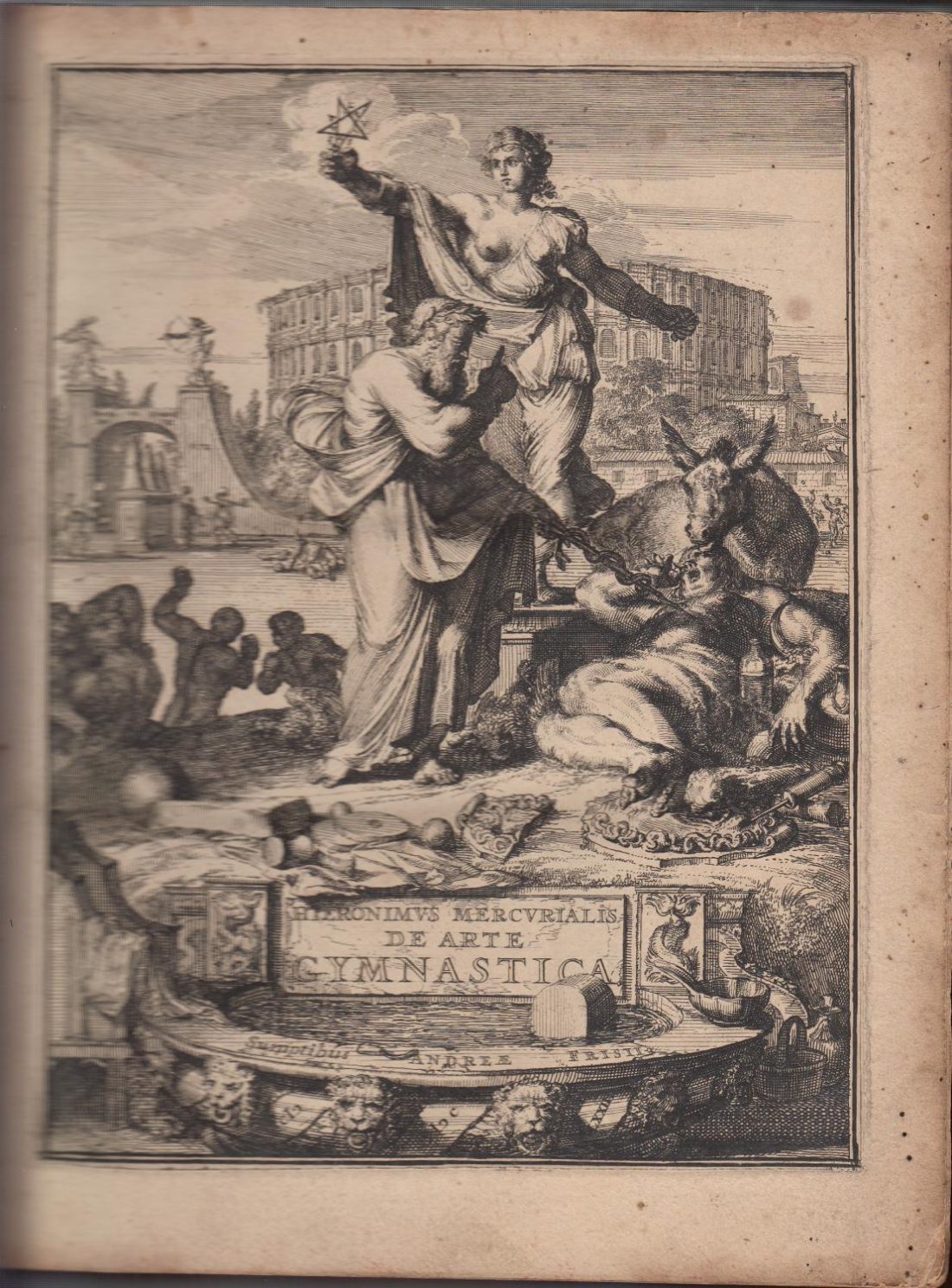Although books dating back to ancient Chinese, Indian, Arabic, Greek and Roman civilisations contained numerous accounts of physical therapies (Galen reports that Roman emperor Julius Caesar used electric fish to treat neuralgia, for instance), De Arte Gymnastica may be the first book dedicated to the specific prescription of those physical therapies.
Published in 1569 by Italian physician Gerolamo Mercuriale, usually known by his Latinized name Hieronymus Mercurialis, the book enjoyed five hand-printed editions. The 1573 second edition was the first illustrated version, including 20 woodcuts by Coriolan which are based on the drawings by Pirro Ligorio.
De Arte Gymnastica was not however the first Renaissance book about the benefits of exercise; Cristobal Méndez’s Libro del Exercicio (1553), which was rediscovered in 1930, predates it by 16 years.
De Arte Gymnastica begins with a review of the ancient knowledge of the subject, gathered from older writers, both literary and medical. In ancient Greece physical culture occupied an important place in the education and everyday life of all citizens and was valued both by the State and by individuals. Physicians were aware of its use in the prevention and treatment of ailments. Though it did not achieve such wide application in ancient Rome, physical exercise was applied in military and athletic training.
Mercuriale then systematically demonstrates the value of exercise in the prevention of illness, the preservation of health, the development of bodily function and the treatment of conditions. He wrote,
The art lies in the ability to foresee the effects of exercise and to apply it in suitable form for both hygienic and curative purposes.
It is this recognition of the specificity of particular exercises and their prescription for specific conditions that perhaps best connects the book to the physiotherapy profession.
Mercuriale divides exercises into three groups of medical, military and athletic use. He deals at length with the types of medical exercise, including dancing, ball games, wrestling, boxing, walking, running, jumping, discus and dumb-bells, throwing, postural exercises, breathing exercises, singing, riding, swimming, fishing and hunting. Each of these is described, together with its effects and its preventive, hygienic and curative indications. Special considerations of age, diet, season and time for exercise are discussed, as well as gymnastic apparatus and training places. He also deals with possible negative effects of exercise, baths and massage.
A complete English translation of De Arte does not yet exist. A large part was quoted in Positions Necessarie for the Training up of Children (1581), an Elizabethan educational work by Richard Mulcaster, the first headmaster of Merchant Taylors’ School. Reprinted in 1888, J.W.F. Blundell includes the Mercuriale text in his work The Muscles and their Story (1864), but interspersed with other material, so that its identity is lost.
De Arte is important pioneer work on the subject of Exercise and Health, an unexcelled source of ancient and Renaissance opinion on physical exercise and maybe could be considered the first book of physiotherapy practice.
Reference:
Ford, E. 1955. The De Arte Gymnastica of Mecuriale. Australian Journal of Physiotherapy, 1(1), 30-32.

